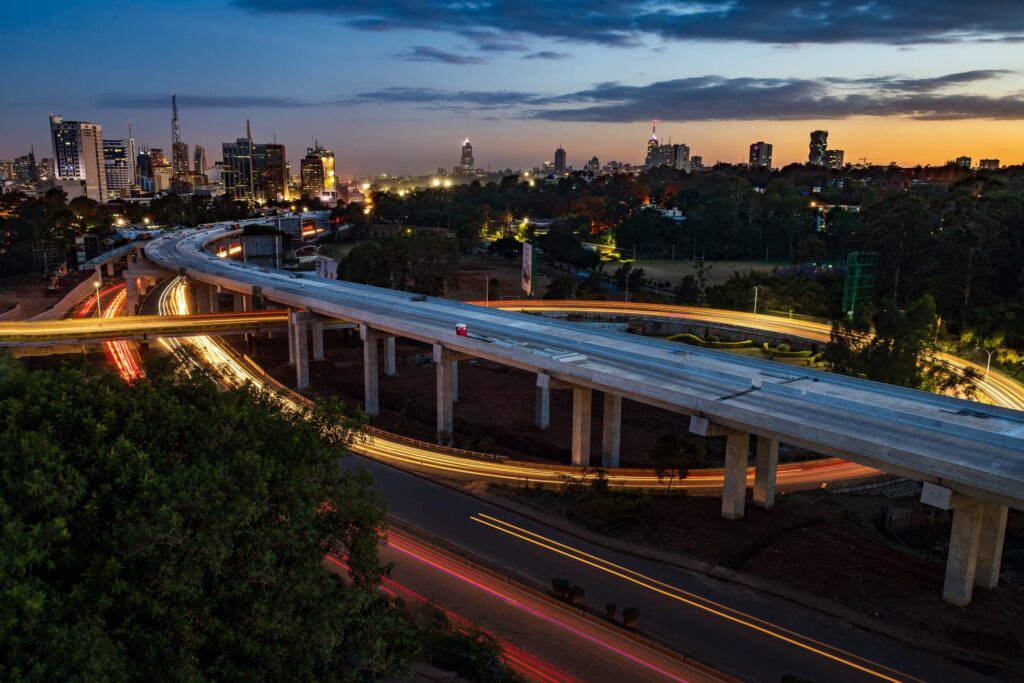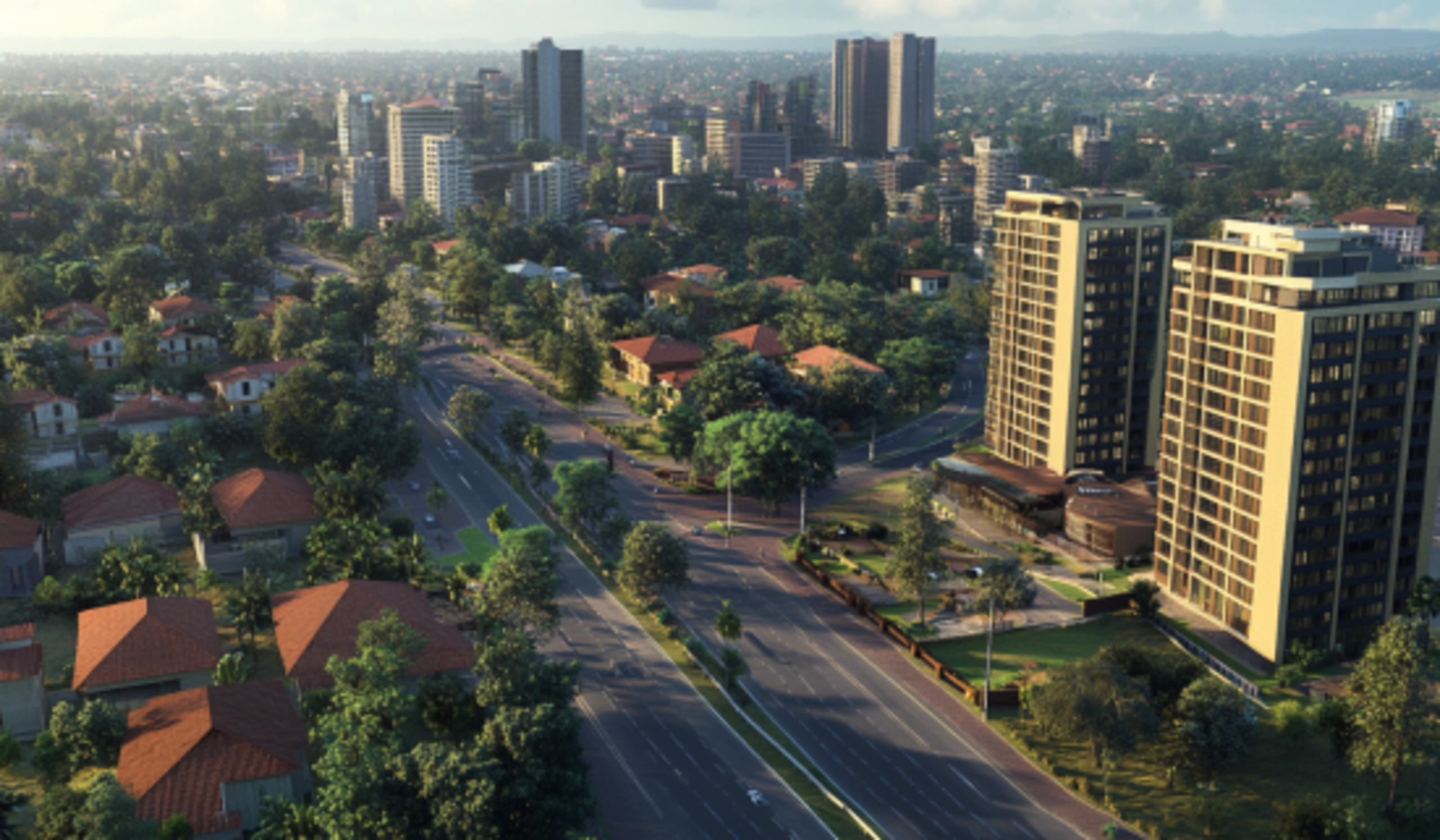- Kenya is rapidly transforming.
- Konza’s phased development focuses first on infrastructure, including roads, power, and water systems, with an aim to attract global tech talent.
- While the original 2022 goal hasn’t yet been met, the project remains a vital step toward addressing Kenya’s urban housing shortage, with demand expected to skyrocket to nearly 300,000 units per year by 2050
Kenya is rapidly transforming, driven by ambitious mega projects aimed at improving infrastructure, fostering economic growth, and enhancing the quality of life for urban residents. From major transportation systems to high-tech cities, these initiatives are changing the way people live, work, and interact in urban areas.
The groundwork for this transformation was laid in 2008, when the Kenyan government launched its Vision 2030 initiative. This long-term development blueprint aimed, among other things, to enhance urbanisation and drive economic growth. Over the years, Vision 2030 has spurred significant improvements in road connectivity and industrialisation, fuelling a shift toward urban living as more people move to cities for better economic opportunities and quality of life.
One pressing issue that underscores the importance of Kenya’s urban projects is housing demand. According to the Kenya Urbanisation Review by the World Bank, published in February 2016, the country faced an annual demand for approximately 80,000 new urban housing units as of 2010. This demand is projected to rise sharply, reaching nearly 300,000 units a year by 2050 as urban populations grow.
Here’s a closer look at some of the most impactful projects and how they’re shaping urban living in Kenya.
Table of Contents
Nairobi Expressway: Easing Traffic and Enhancing Connectivity

Imagine cutting your commute from two hours to less than 20 minutes. That’s now a reality for thousands of Nairobi residents and visitors who travel on the Nairobi Expressway. This 27-kilometer highway, which links Jomo Kenyatta International Airport to Nairobi’s bustling Westlands area, has brought a major transformation to the city’s daily rhythm. By slicing travel time across Nairobi, the expressway has not only made life easier for commuters but has also opened the city up in exciting new ways.
The benefits go beyond simply saving time. The highway not only alleviates congestion but also provides commuters with a fast and reliable route through the heart of the city. This improved connectivity makes Nairobi more liveable, as people can spend less time in traffic and more time with family, engaging in personal activities, or working productively. Additionally, the expressway has inspired new commercial developments along its route, creating business hubs and stimulating job growth.
READ ALSO: Has The JKIA-Westlands Expressway Solved The Traffic Menace?
Konza Technopolis: A Smart City for the Future

I’m sure most of us are familiar with the term “Silicon Valley”—the iconic tech hub of the United States. Kenya is now building its own version: “Silicon Savannah,” known formally as Konza Technopolis. Located just 70 kilometers southeast of Nairobi, Konza is an ambitious project aiming to establish Kenya as Africa’s leading centre for technology and innovation. This future-forward city will be home to technology firms, research institutions, universities, and residential zones, designed to rival some of the world’s most advanced smart cities.
Konza’s phased development focuses first on infrastructure, including roads, power, and water systems, with an aim to attract global tech talent. Once complete, this tech city is expected to create around 17,000 jobs by 2030, significantly boosting the local economy. Built with sustainability in mind, Konza will feature green spaces, renewable energy, and advanced waste management, promoting eco-friendly urban living.
For residents, Konza offers more than just jobs—it promises access to quality healthcare, education, and recreational facilities, allowing for a balanced work-life dynamic. As Nairobi’s demand for housing and services grows, Konza serves as a model for sustainable urban planning, inspiring new approaches to liveable city design across Kenya.
Affordable Housing Project: Meeting the Demand for Urban Housing
As Kenya’s population grows, so does the need for more affordable places to call home. That’s why, in 2017, the government rolled out the Affordable Housing Project as part of its “Big Four Agenda”—a bold plan to build 500,000 affordable homes across all 47 counties. While the original 2022 goal hasn’t yet been met, the project remains a vital step toward addressing Kenya’s urban housing shortage, with demand expected to skyrocket to nearly 300,000 units per year by 2050. Imagine what that could mean for families across the country—having a home that’s not only affordable but designed with community in mind.
This initiative is about more than just putting up buildings. It’s about creating mixed-use developments that blend residential, commercial, and social spaces all in one area. Picture a neighbourhood where everything you need—workspaces, shops, parks, and schools—is within reach. It’s an approach that reduces commute times, builds community bonds, and brings a true sense of belonging. If successful, the Affordable Housing Project could redefine urban living for thousands of Kenyan families, offering vibrant, connected spaces where life, work, and community come together.
READ ALSO: Understanding the National Housing Development Fund Kenya
Conclusion
Kenya’s mega projects are reshaping urban living by boosting connectivity, encouraging economic growth, promoting sustainability, and meeting essential social needs. These projects represent not only infrastructure improvements but a vision of a modern, inclusive, and resilient Kenya.
While challenges remain, including financing and environmental considerations, these transformative projects underscore Kenya’s ambition to become a regional powerhouse. As these mega projects take shape, they will continue to redefine urban living, creating a brighter future for millions of Kenyans.



